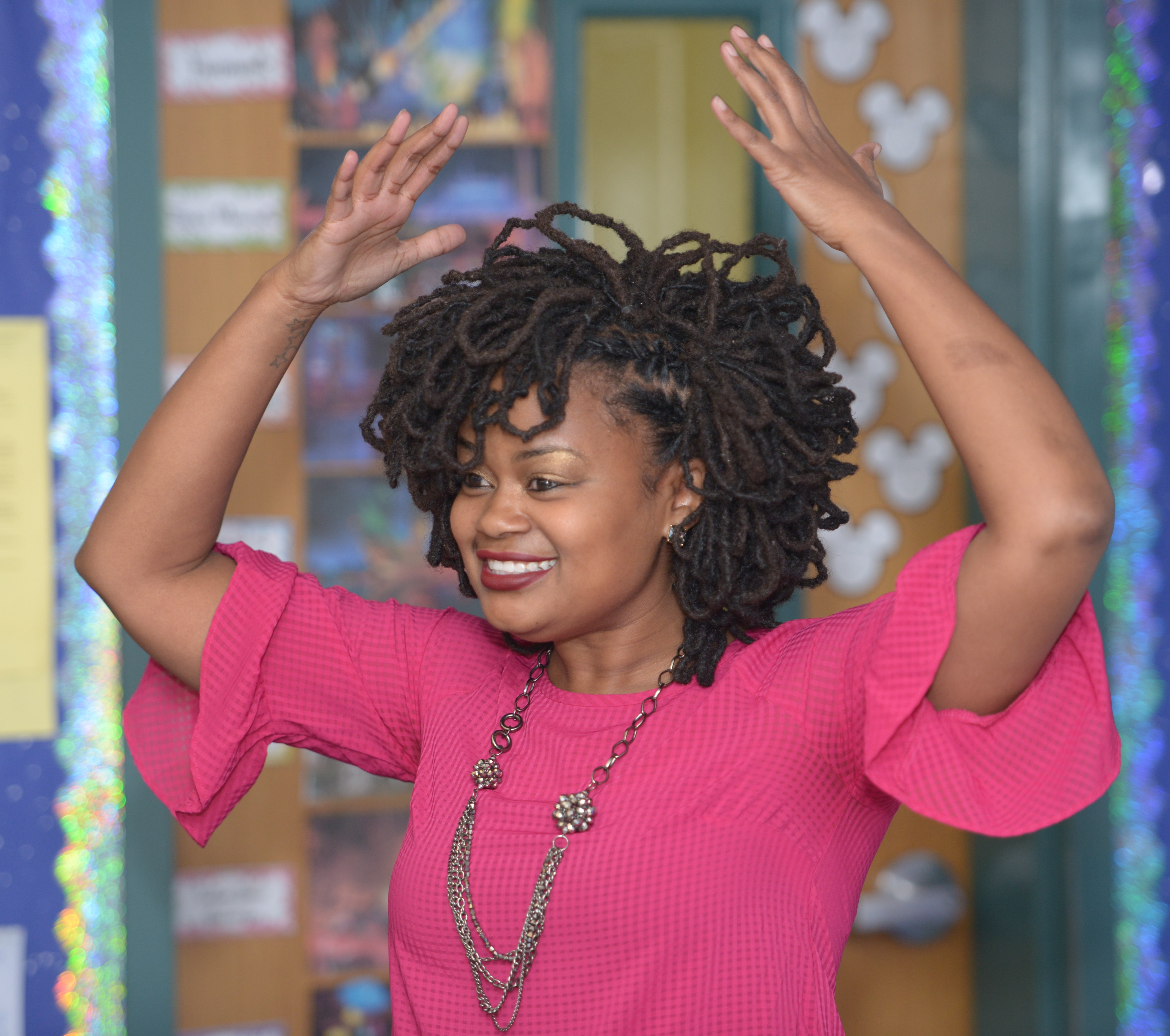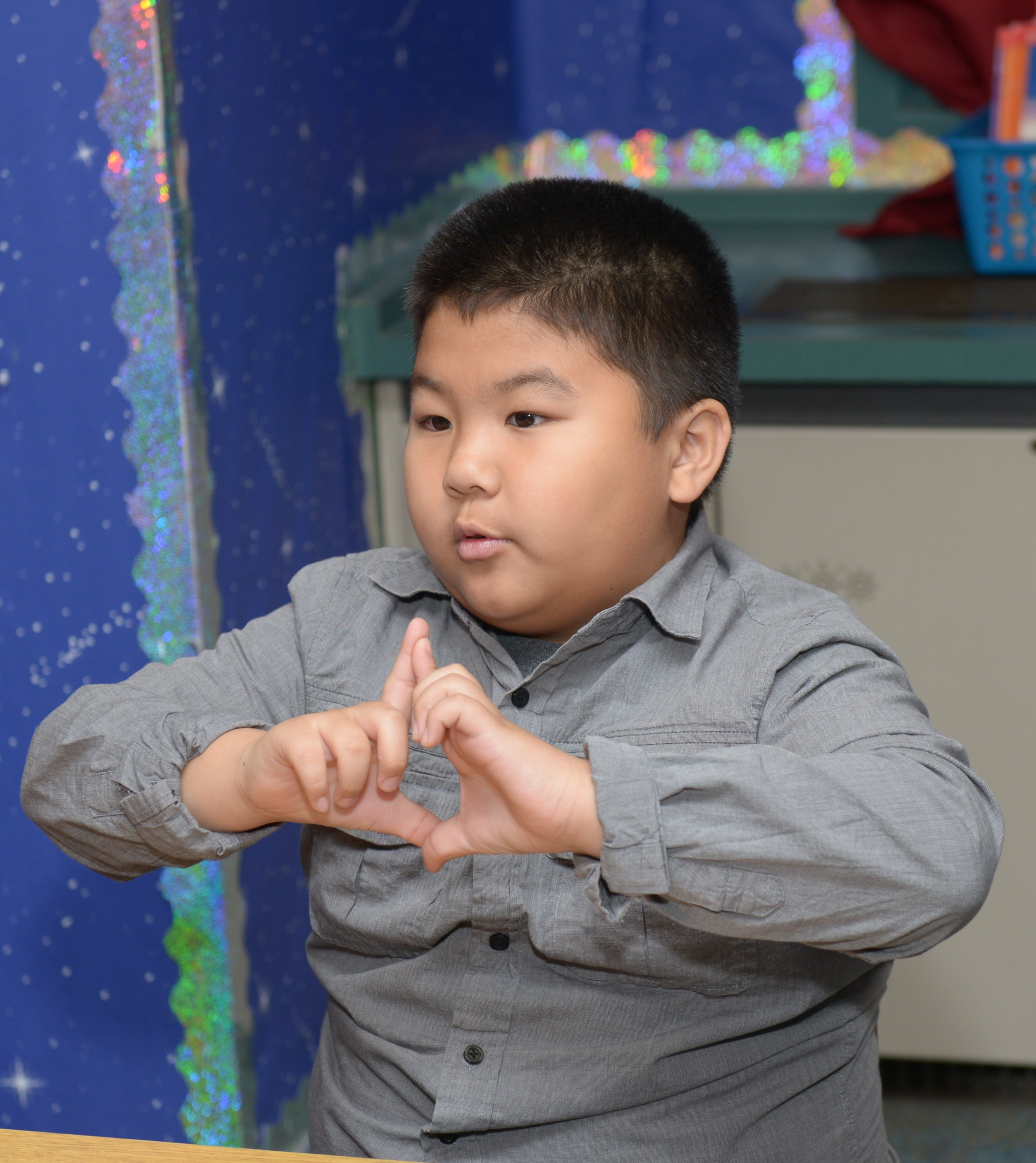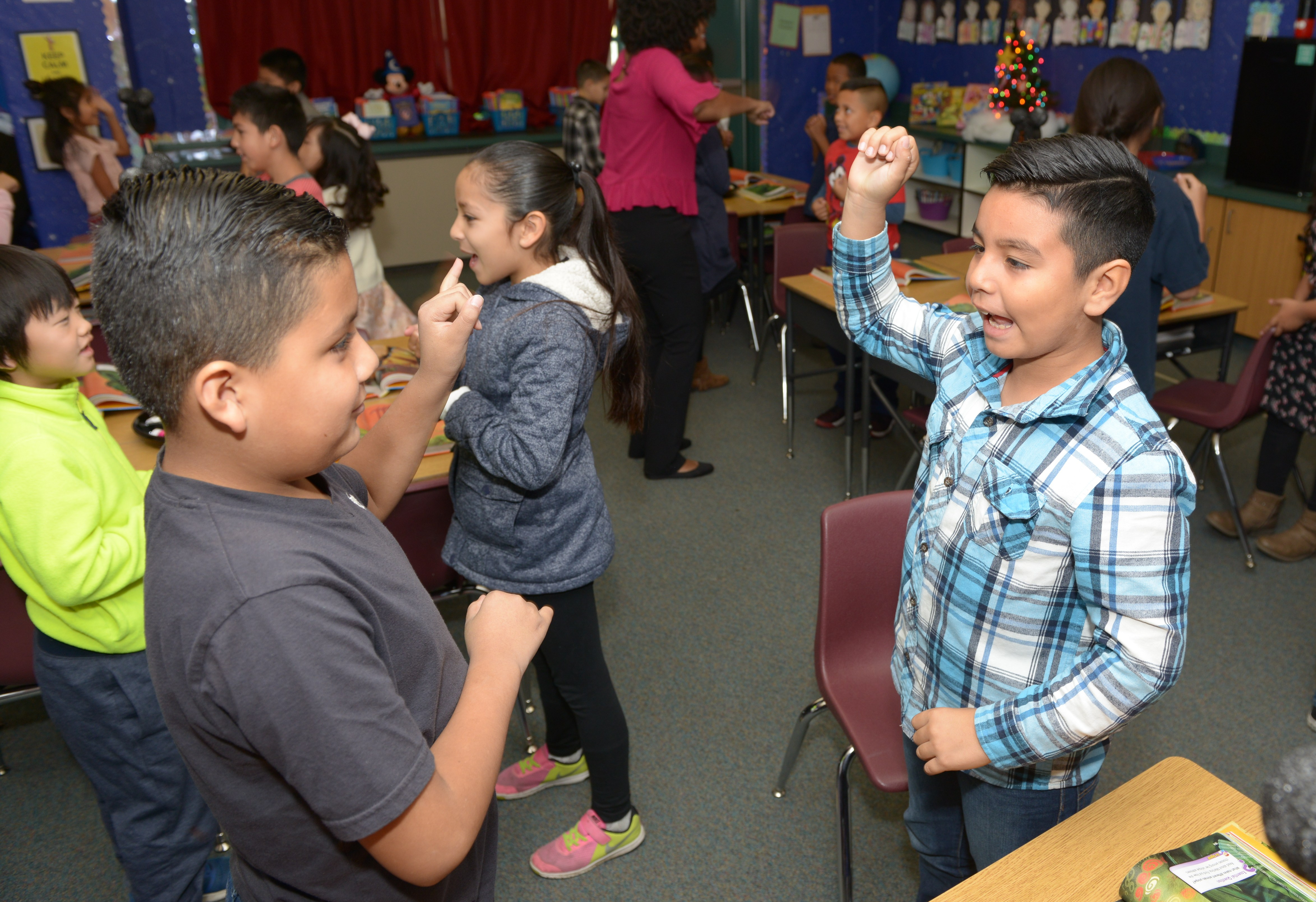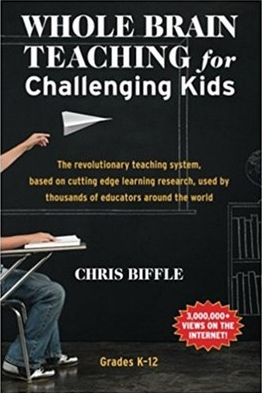Photos by Scott Buschman
“When you visualize,
You create a picture
In your head
As you read.”
Third-graders at Greenberg Elementary School in Fresno recite this in unison with teacher Carlanda Williams several times. Every word has accompanying hand gestures. When saying “visualize,” for example, students wave their hands on each side of their head, to demonstrate what kind of visualization is happening inside their noggins. For the word “picture,” Williams and her students outline a square with their hands.
Welcome to Whole Brain Teaching (WBT), a different kind of approach founded by Southern California educator Chris Biffle in 1999. WBT purports to maximize student engagement and matches instruction with how the human brain is designed to learn. This means students use their entire brains instead of just a small portion, which is normally the case, and engage in chants, inflection, hand gestures, head motions, and in some cases full body motions.

Carlanda Williams says Whole Brain Teaching is “where your rational side and your creative side come together.”
It’s loud and chaotic in Williams’ class, but students are having fun, are completely engaged, and understand the meaning of visualization perfectly. When their teacher asks them to close their eyes and visualize characters in the Cuban folktale Martina the Beautiful Cockroach, students give detailed, vivid descriptions to their tablemates of how they envision the characters.
“I love using Whole Brain Teaching,” says Williams, a teacher for six years who taught special education prior to this school year, which has given her oodles of patience. “It’s a form of learning where your rational side and your creative side come together. There’s no behavior issues in my class because students are always moving and talking with each other. They don’t have time to goof off.”
Teacher of the Year
Williams has been so successful with this teaching method that she was recently named Elementary Teacher of the Year by Fresno Unified School District.
Williams believes that using “kid-friendly language,” repetition, gestures and body language, and letting students talk to peers about subject matter — all components of WBT — allows them to remember what they have learned.
“It worked for me in preparing to teach adults, too,” she adds. “I started teaching professional development a few months ago, and saying things over and over and using gestures made me feel more prepared to present, and the adults were engaged in using the gestures.”
While WBT has not been validated by contemporary brain research, many educators say its methods are effective, and some scientists think the techniques have value.
“The brain learns when things are surprising and interesting,” said Daphna Shohamy, neuroscientist at Columbia University, in a 2015 PBS report. “So keeping things a little bit noisy and a little bit different is actually really beneficial for learning in many different ways.”
WBT is at times boisterous, but it is not anarchy. There are rules that must be followed, says Williams, a Fresno Teachers Association member. She and students chant and pantomime these rules at the beginning of class in a way that, if possible, makes rules fun.

Student Aaron Cha demonstrates the “Diamond Rule.”
Having students spend a few minutes familiarizing themselves with classroom expectations each day saves time in the long run, says Williams, because transitions between subjects and activities happen smoothly and quickly; students are given positive reinforcement instead of scolding, which improves morale; and they can let off steam.
WBT also recognizes emotion. If students do well, it’s time for a “One-Second Party” and kids say “Oh yeah!” instantaneously with gusto. If students are not following the WBT rules, it’s time for a “Mighty Groan” where they put their shoulders up to their ears and groan “ahhh” dramatically.
Like many who practice WBT, Williams keeps a scoreboard that rewards students for appropriate behavior. There are no actual prizes; instead, students evolve to “higher levels” on the scoreboard, much like what happens in video games, where soaring to a higher level becomes its own reward.
Her classroom is decorated in a Disneyland theme — including a fireworks display on the wall — and like Disneyland, it is one of the happiest places on earth. Indeed, Williams has enough energy, radiance and enthusiasm for her own children’s television show.
Parents, administrators, students on board
When she first heard about WBT, Williams thought it sounded interesting, so she attended a two-day conference in Louisiana, where speakers modeled instruction and demonstrated how it works. She decided afterward that she did not want to go back to ordinary teaching.
“My administrators have been very supportive. My principal loves it because kids are actively engaged. I appreciate that I have that kind of freedom.”

Students practice what they’re learning using gestures, chants and more with their tablemates.
At first, she was a bit concerned about what parents would think, but after an explanation and demonstration at back-to-school night, and seeing how their children loved it, parents embraced it. Many told her that their formerly shy children were much more outgoing and confident.
Williams emphasizes that it’s more than chanting. Because her students are more expressive, they have become critical thinkers.
“Some of the kids who used to be really shy are now opening up and having rich conversations in class based on information they have read in the text. To see students have an entire conversation without me and become facilitators of their own learning is every teacher’s dream.”
“I’m glad to be in this class,” says student Jorge Mariscal. “At first it was kind of weird, but now it feels regular. It really makes learning fun.”
“I like it a lot,” says classmate Rosie Trujillo. “Practicing things aloud not only helps our writing, but it also helps us talk in complete sentences.”
Williams posted a video on Facebook using WBT, and it has been viewed nearly 100,000 times. A few other teachers at her school have also taken up this style of teaching. Williams was recently featured on ABC 30 Fresno, and teachers from all over the country and even in Canada and the Philippines have reached out to her to learn more about WBT.
“I think it’s the coolest thing ever,” says Williams. “It makes learning joyful. And what can be better than that?”
Whole Brain Teaching Rules
With Whole Brain Teaching, Carlanda Williams’ students “mirror” her words or chant back information and mimic hand movements, including this before each day’s lessons:
Class?
Yes?
My sweet class?
My sweet class.
Mirror words.
Mirror words.
Rule Number 1.
Rule Number 1.
Follow directions quickly.
Follow directions quickly.
Other rules students recite are:
Raise your hand for permission to speak.
Raise your hand for permission to get out of your seat and leave.
Make smart choices.
Keep your dear teacher happy.
“Diamond rule”: Keep your eyes on the target.
 Williams recommends educator and author Chris Biffle’s book to learn more about Whole Brain Teaching: Whole Brain Teaching for Challenging Kids. She also uses strategies from Making Thinking Visible, by Ron Ritchhart, Mark Church and Karin Morrison.
Williams recommends educator and author Chris Biffle’s book to learn more about Whole Brain Teaching: Whole Brain Teaching for Challenging Kids. She also uses strategies from Making Thinking Visible, by Ron Ritchhart, Mark Church and Karin Morrison.
For more on Williams and WBT, view videos of her leading class at tinyurl.com/WBT-CWilliams, and check out wholebrainteaching.com.